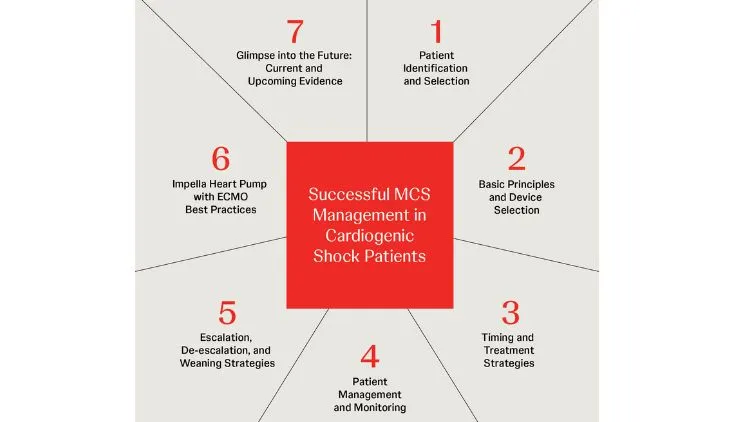Clinical Research & Data, AMI Cardiogenic Shock, Protected PCI
Impella® Placement Pre-PCI for AMI Cardiogenic Shock
Mario Iannaccone, MD, discusses his recent meta-analysis on the timing of Impella placement in PCI for acute myocardial infarction (AMI) complicated by cardiogenic shock with interviewer Aditya S. Bharadwaj, MD, at SCAI 2022 in Atlanta, Georgia. Dr. Iannaccone is an interventional cardiologist at San Giovannis Bosco Hospital in Turin, Italy.
Dr. Iannaccone explains that his meta-analysis includes 13 studies with some of the sickest patients with AMI cardiogenic shock (47.5% had out-of-hospital cardiac arrest and mean lactate level was 6.7). Although some of the studies preceded the SCAI shock classification system, Dr. Iannaccone hypothesizes that patients were in SCAI class C to D.
In this analysis, the primary endpoint was short-term mortality---death within 1 month of AMI presentation. Secondary endpoints were medium- or mid-term mortality (death occurring between 1 month to 1 year of AMI presentation) and device-related complications.
Dr. Iannaccone explains that all 13 studies demonstrated reduction in mortality with an upfront strategy of Impella placement prior to primary PCI. In the 6 studies that included data on medium-term mortality, he states that Impella placement pre-primary PCI resulted in improved survival without an increase in risk of device-related bleeding and limb ischemia.
Dr. Iannaccone discusses how the difference in mortality between Impella pre- and post-PCI groups increased from 16.4% short-term to 23% at mid-term. He explains that most cardiovascular events occurring from the first month to year following AMI are primarily due to post-MI heart failure and that the divergence in these curves in his analysis is likely “because of increased recovery in pre-PCI strategy versus post-PCI strategy. So, less heart failure post-MI and less mortality also in mid-term.”
Both Dr. Iannaccone and Dr. Bharadwaj emphasize that timely recognition and diagnosis of cardiogenic shock in AMI patients is of paramount importance, as highlighted in the National Cardiogenic Shock Initiative (NCSI) algorithm. Dr. Iannaccone explains that at many institutions the lack of internal algorithms can be a barrier to placement of Impella pre-PCI in AMI cardiogenic shock; however, he notes, “we are living a change of paradigm” and the evidence for Impella placement pre-PCI is coming. He also states that many operators are concerned about large-bore vascular access in the urgent setting of AMI cardiogenic shock, but that there are techniques and strategies to overcome these concerns.
Dr. Iannaccone and Dr. Bharadwaj discuss how to achieve the NCDR metric of door-to-balloon time of under 90 minutes when placing an Impella in AMI patients presenting with cardiogenic shock. “If you have a protocol in place,” Dr. Bharadwaj states, “and if you train yourself and your cath lab to know that you have a patient in shock coming in and we’re going to be putting in an Impella pre-PCI, you can easily achieve not just the door-to-support time, but also door-to-balloon time of less than 90 minutes.” Dr. Iannaccone confirms that the situation is similar in Italy, noting that it is important to look at door-to-support time because Impella is an important part of the therapy. He also emphasizes that Impella helps stop the downward spiral to cardiometabolic syndrome and multiorgan failure and, as a result, patients may be candidates for long-term LVAD or transplantation.
“I think placement of Impella is the therapy for cardiogenic shock, and I think we, as interventional cardiologists, have sort of been fixated on trying to open up the artery and restore the anatomy,” Dr. Bharadwaj concludes, “where I think now we’re beginning to realize that we need to restore the physiology before we actually restore anatomy.”
IMP-3377


